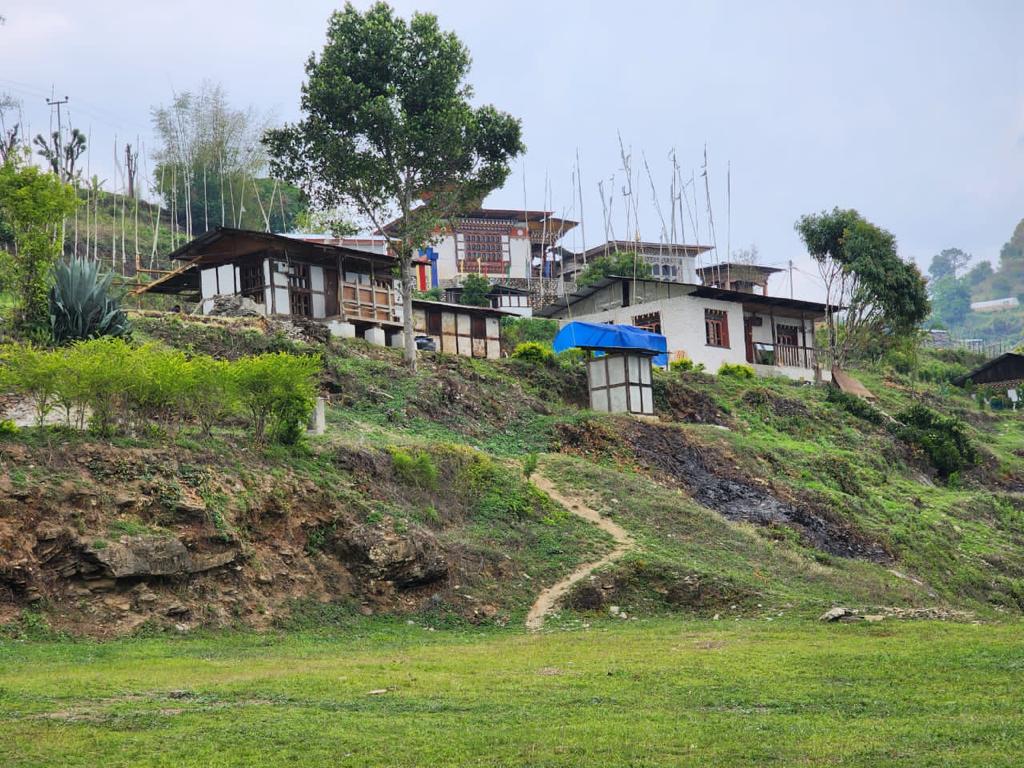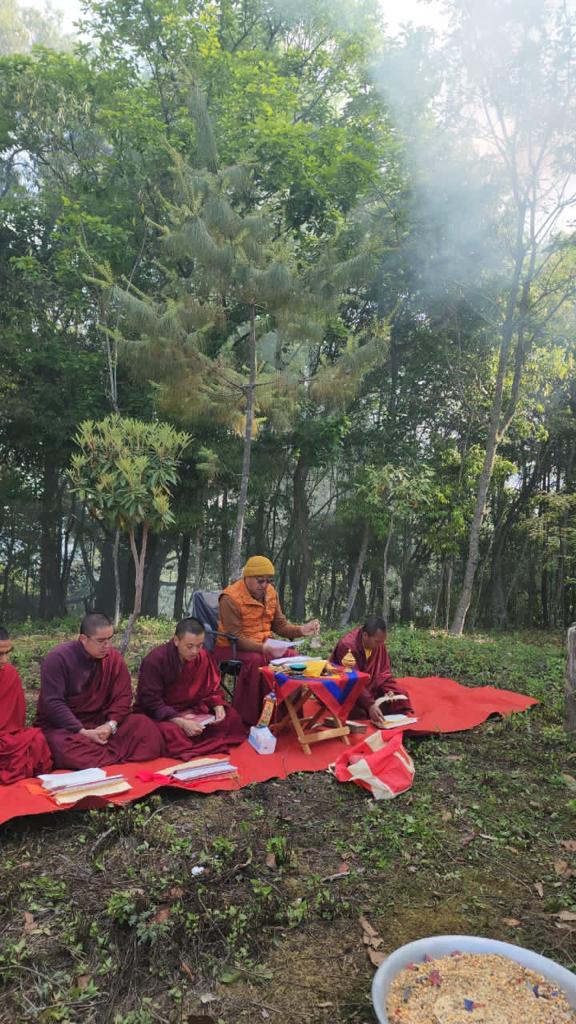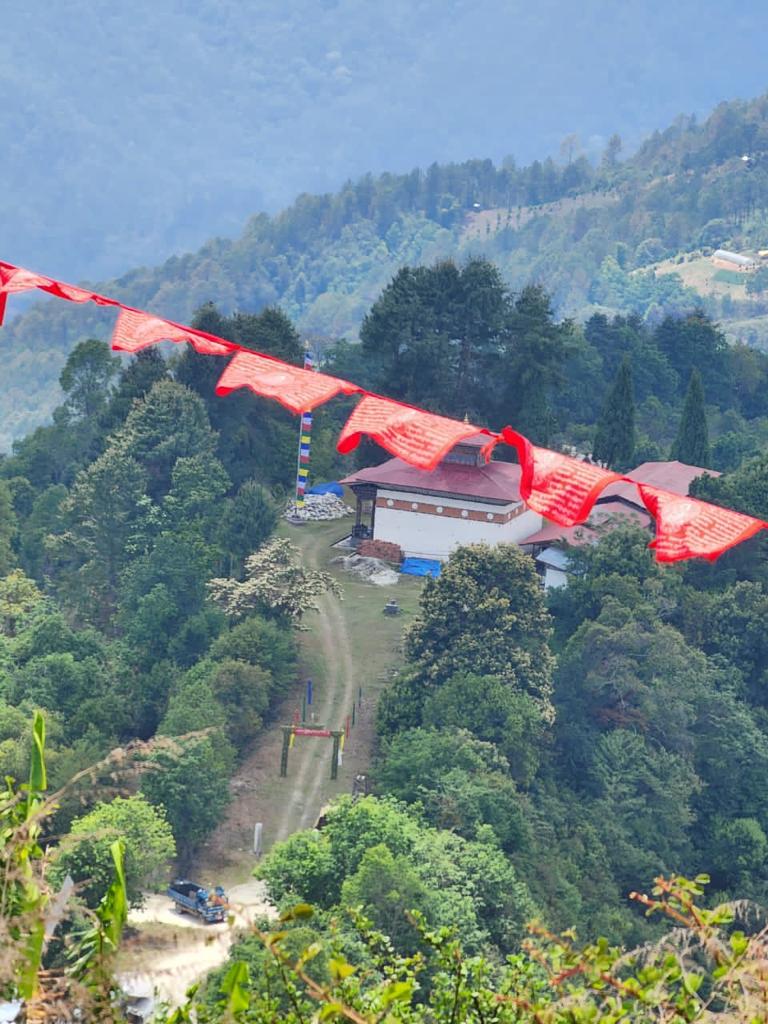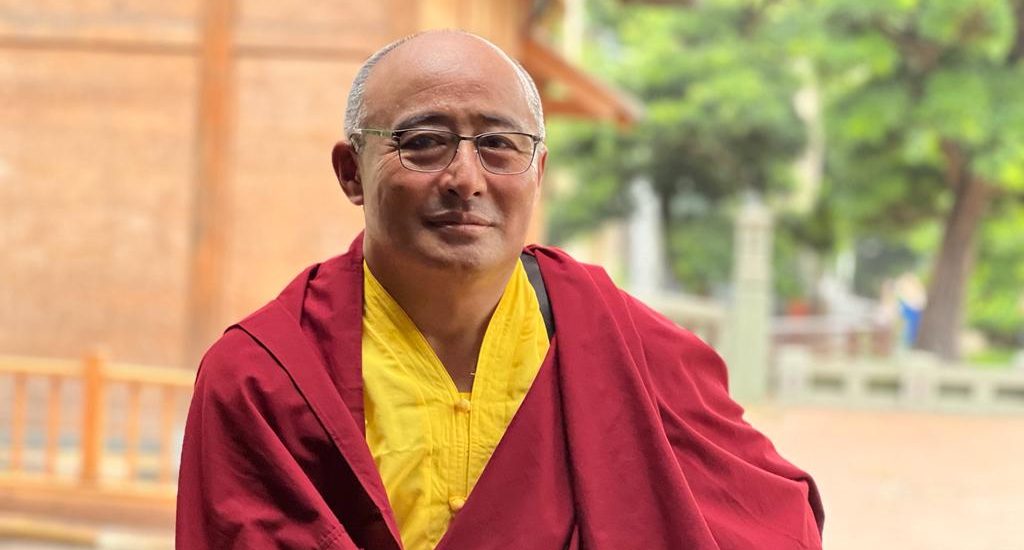Bhutan may be a relatively new entity in terms of being a democratic nation-state, but its array of esteemed masters have long taken pride in tracing their diverse lineages back to Nyingma-pa teacher Pema Lingpa (1450–1521). He is the de facto national saint of Bhutan, having been commissioned by Padmasambhava himself to reveal all manner of terma (spiritual treasures). In the Bhutanese national self-understanding, he consecrated the landlocked Himalayan kingdom to be a realm of terton (treasure revealers), among whom he was paramount. To this day, his lineage, that of the Peling, covers the entirety of the Bhutanese country. The scope of practice in this lineage follows the traditional Nyingma model, from tshechus and lochoe to retreats and meditation.
For centuries, Pema Lingpa has reincarnated in a succession of eminent masters that have guided Bhutan’s people and consolidated its position as a haven of Buddhist piety and heritage. HE Lhalung Sungtrul Rinpoche is the most recent incarnation. The elder cousin of Zuri Rinpoche, Lhalung Sungtrul Rinpoche is a believer of tradition. He is the chief abbot of Drametse Monastery, one of three sites of that represent Pema Lingpa’s three lineage: those of his own direct reincarnation (Peling Sungtruel), his son (Peling Thukse), and his grandson (Peling Gyalse).
Having inherited the responsibility of caring for over 300 monks at Drametse Monastery, he is busier than ever guiding the next monastic generation in an uncertain world with new challenges that were unknown to past masters. Yet at the same time, some things never change. I spoke with him to discuss how a scion of an august spiritual lineage such as he strikes a balance between the familiar and the unfamiliar.
Drametse Monastery is unique for its antiquity (it was founded in 1511) and for the woman that founded it: Ani Chorten Zangmo, Pema Lingpa’s granddaughter. “The monastery was renovated in 2004 but on 21 September, 2009, it was severely damaged by an earthquake,” said Rinpoche. “Since then, the monastery has been rebuilt and now functions as a Peling lineage college for monks. I take my responsibility of guiding these novices at Drametse very seriously. Apart from providing them with clothing and food, quality education and maintaining their physical health are a couple of our main foci. To provide them with good and timely healthcare, a basic training program was provided to a senior monk. Now he is the health warden in charge at the monastery. We also have sent a monk to undergo training at the indigenous medicine hospital at Thimphu. We therefore combine traditional healing practices with modern medicine.”

The world of the 21st century demands that skill sets evolve with a rapidly changing, globalized context. “To keep abreast with the world, especially in terms of technology, we have introduced classes in IT, English, and Mathematics,” Lhalung Sungtrul Rinpoche told me. He also feels a special responsibility to women given the heritage of Drametse Monastery. “Although women have always played a strong role in helping Dharma practices to flourish since the beginnings of Bhutan, many a time, men have overshadowed them,” said Rinpoche. “More Buddhist schools and institutes for girls should be established where they can not only learn about religion and philosophy, but can be guided to become leaders and managers. Equal opportunities for nuns should be given in policymaking and curriculum development.”
As part of his own contribution to this aspiration for gender equality, Rinpoche is establishing an “astrology nunnery” in the remote villages of Dagor and Nanong in Pema Gatshel, the eastern region of Bhutan. “Although there are many nunneries in different parts of the country, so far, none of them provide astrology studies for the nuns,” observed Rinpoche. “So when the community of Nanong and Shumar offered me the land, I thought about the opportunity it could provide for the young girls to pursue astrology studies, which can then help the communities at large. Currently, my project consists of the nunnery school for beginning students, the nunnery’s astrology institute, and a retreat center.”

There is one more landmark that Lhalung Sungtrul Rinpoche is engaged in repairs for. Könchogsum Lhakhang in central Bhutan is fabled for being one of the 108 temples built by the Tibetan rgyal po (Dharma king) Trisong Detsen. Its antiquity, dating back to the era of the empire known as Tubo and the first diffusion of Buddhism in Tibet, was proclaimed by Pema Lingpa himself. Such a narrative might have staked a Bhutanese claim to continuity with the land of Tubo, and indeed to the pre-sectarian expression of Nyingma-pa – indeed, the Nyingma school before it had a consciousness of itself as the Nyingma, defined in opposition to the “sarma” schools that arose during the Tibetan Renaissance (the Kagyu, Sakya, and Gelug).
Rinpoche shared: “Pema Lingpa talked about the time when Guru Rinpoche [Padmasambhava] conducted the a magical ceremony to build Könchogsum Lhakhang. This is because there was a lake underneath the monastery site. It is said that the nagas from beneath the lake rose to the surface and offered a bell, making a pact with Guru Rinpoche not to harm any sentient beings. Then Guru Rinpoche sealed the entrance to the subterranean lake with a stone, which still stands today in the temple. The bell is one of the main relics of Könchogsum Lhakhang. In February 2010, the site was severely damaged by fire and has since been rebuilt. In 2014, the new Könchogsum Lhakhang was consecrated.”

His other concurrent projects include a school for monks at Tamshing Monastery in Bumthang, and the construction of a 37-feet-tall statue of none other than Pema Lingpa in central Bhutan’s Tama, Zhemgang. Each initiative he is engaged in bridges the needs of the present, including those that require facilities for practice, with Bhutan’s ancient link to Tibet through Pema Lingpa. Lhalung Sungtrul Rinpoche is himself an embodiment of that connection, through his tulku-hood going all the way back to Pema Lingpa. It was Pema Lingpa that consolidated Nyingma as the original school of practice in Bhutan, and it is thanks to him that some of the most illustrious teachers from Bhutan claim Peling lineage. This continuity and adherence to tradition, for Rinpoche, is a strength rather than a shortcoming, and will fortify him and other Buddhist leaders as they navigate a rapidly changing global environment.
Is the age of tertons over, revelation through insight (prajna) closed? Perhaps there are many more treasures yet to be revealed.


